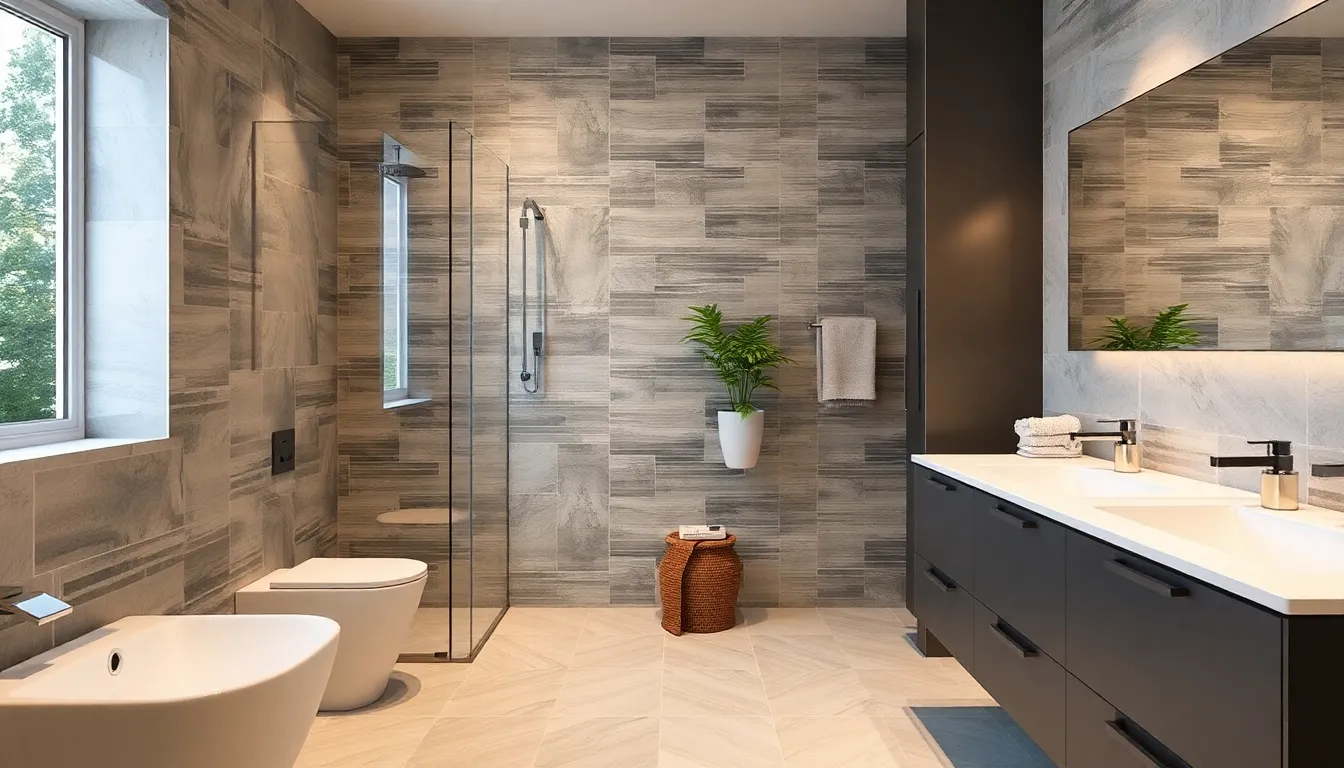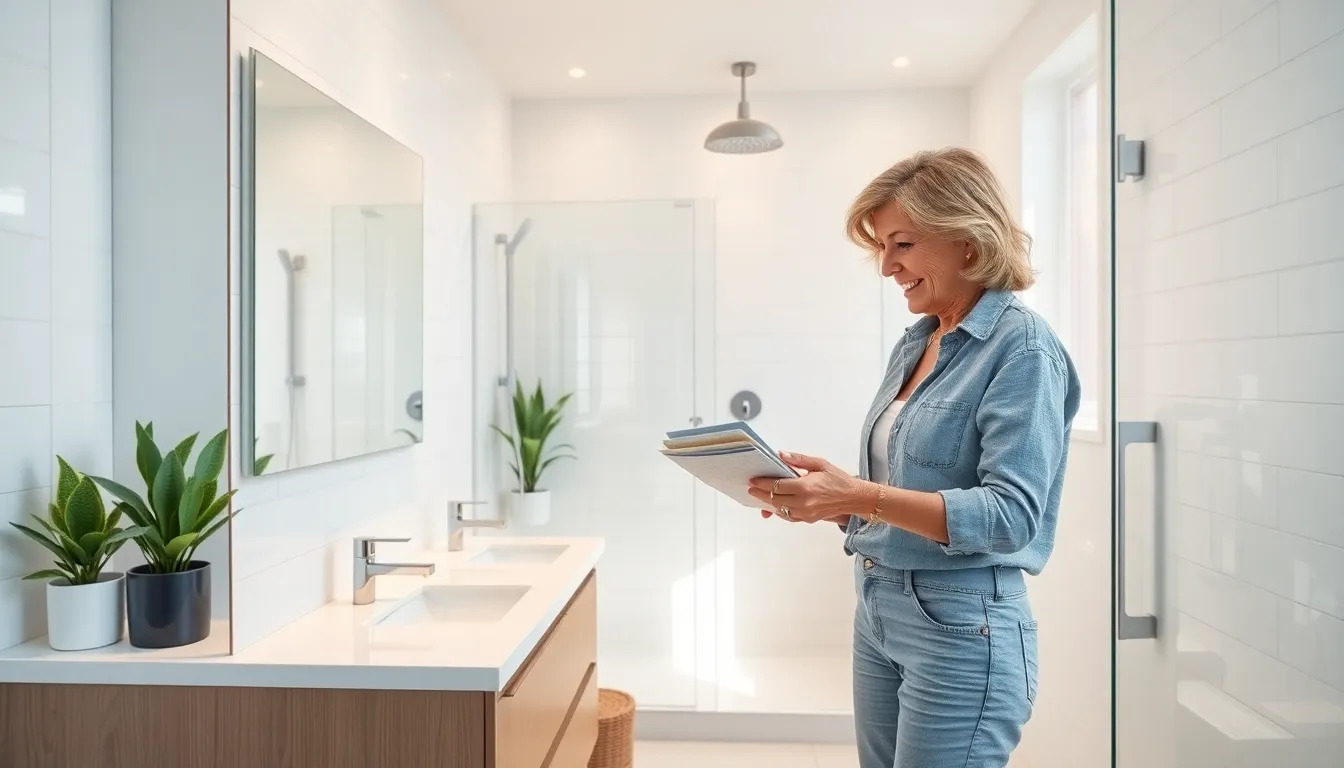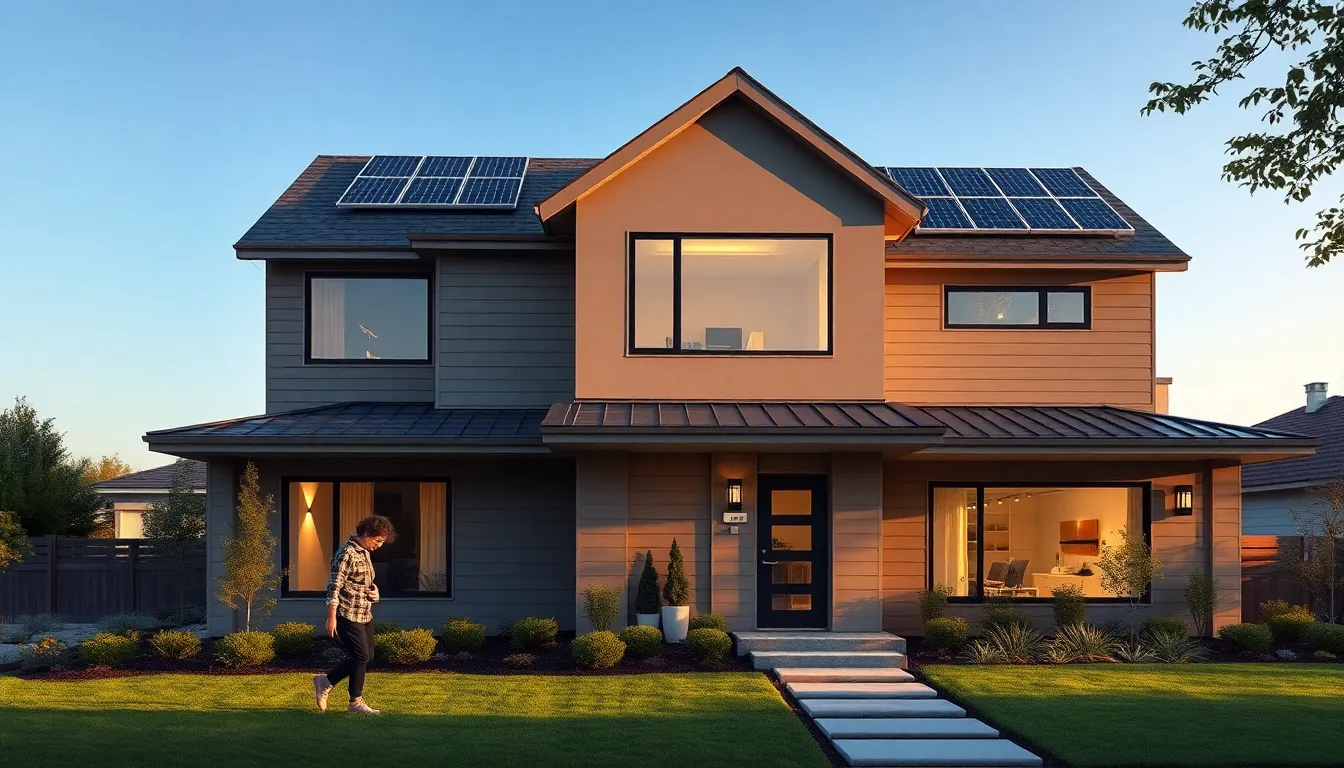A bathroom renovation can transform a mundane space into a personal oasis, blending functionality with style. As homeowners look to enhance their living environments, the bathroom often becomes a focal point for improvement. Whether it’s updating fixtures, reconfiguring layouts, or introducing modern design elements, a well-planned renovation can significantly elevate the overall value of a home.
In today’s market, the demand for stylish and efficient bathrooms has surged. Homeowners are increasingly seeking innovative solutions that reflect their tastes while maximizing space. From luxurious spa-like retreats to sleek and minimalist designs, the options are endless. Understanding the latest trends and practical considerations can make all the difference in achieving a successful bathroom makeover.
Table of Contents
ToggleWhat Is Bathroom Renovation?
Bathroom renovation involves upgrading and updating the existing space to enhance aesthetics, functionality, and efficiency. This process can include a variety of projects, from simple cosmetic improvements to extensive remodels that alter the layout entirely.
Common aspects of bathroom renovation include:
- Fixture Replacement: Changing sinks, toilets, bathtubs, and showers to modern styles that improve usability and efficiency.
- Tile Work: Installing new tiles for floors, walls, or backsplashes to incorporate trendy designs and easier maintenance.
- Lighting Updates: Replacing outdated lighting with brighter, energy-efficient options that enhance ambiance and visibility.
- Storage Solutions: Adding cabinetry and shelving to provide practical storage and reduce clutter in the bathroom.
Effective bathroom renovations respond to homeowner needs by combining individual style preferences with functionality. A thoughtful approach can elevate the experience of the bathroom while increasing the property’s overall market value significantly.
Benefits of Bathroom Renovation

Bathroom renovations offer numerous advantages, enhancing both the living experience and property value. They play a crucial role in modernizing spaces while improving overall functionality and aesthetics.
Increased Home Value
Increased home value often stems from thoughtful bathroom renovations. According to the National Association of Realtors, a bathroom remodel can yield a return on investment of up to 70%. Upgraded fixtures, contemporary tile designs, and improved layouts attract potential buyers, making homes more appealing in a competitive market. Enhanced energy efficiency, through modern plumbing and lighting fixtures, also adds tangible value, as eco-friendly features gain importance among homebuyers.
Improved Functionality
Improved functionality defines the success of a bathroom renovation. Space optimization features, such as vanities with built-in storage, ensure efficient use of limited areas. Installing modern fixtures, like dual-flush toilets and water-efficient showerheads, not only promotes a sustainable lifestyle but also enhances user experience. An organized, accessible layout accommodates varying family needs, ensuring the bathroom serves its primary purpose effectively while offering a comfortable atmosphere.
Step-by-Step Guide to Bathroom Renovation
Bathroom renovation involves meticulous planning and execution. This step-by-step guide outlines the essential phases, ensuring homeowners achieve their desired results.
Planning and Budgeting
Planning and budgeting are crucial first steps in a bathroom renovation. Homeowners should:
- Set a budget: Identify a specific spending limit that includes materials, labor, and unexpected expenses. A typical bathroom renovation costs between $10,000 and $30,000, depending on scope and quality.
- Assess needs: Determine what aspects of the bathroom require updates, like fixtures, tiles, or plumbing. Consider functionality and storage options.
- Gather estimates: Provide detailed renovation plans to contractors for accurate quotes. Obtain at least three estimates to compare pricing and services.
- Establish a timeline: Define a realistic timeline for the completion of the project, from planning to execution. Factor in delays for permitting and shipping times.
Design Considerations
- Style choices: Select a design style that reflects personal taste, such as modern, traditional, or minimalist. Consistency in design elements enhances overall appeal.
- Layout optimization: Plan the layout to maximize space and improve flow. Consider the placement of fixtures, cabinets, and lighting for usability.
- Color schemes: Choose colors that create the desired atmosphere. Light colors can make smaller bathrooms feel larger, while darker tones add sophistication.
- Material selection: Select durable and water-resistant materials for surfaces and fixtures. Options like porcelain tiles, quartz countertops, and moisture-resistant paint ensure longevity.
- Eco-friendly options: Integrate energy-efficient fixtures and water-saving appliances. Incorporating green features can lower utility costs and appeal to environmentally conscious buyers.
Common Bathroom Renovation Mistakes
Homeowners often overlook key aspects during bathroom renovations. Not recognizing these mistakes can lead to frustration and increased costs.
- Neglecting the Budget
Homeowners frequently underestimate renovation expenses. Setting a realistic budget helps avoid overspending on unexpected costs.
- Poor Space Planning
Insufficient consideration for layout often results in cramped spaces. Effective planning ensures an ergonomic design that maximizes functionality.
- Ignoring Lighting Options
Many homeowners fail to assess lighting needs. Combining ambient, task, and accent lighting enhances the bathroom’s overall appeal and usability.
- Choosing the Wrong Materials
Selecting inappropriate materials can affect durability. Using water-resistant materials prolongs the life of surfaces and fixtures.
- Overlooking Ventilation
Inadequate ventilation leads to mold and humidity issues. Proper ventilation systems protect walls and fixtures from damage.
- Focusing Solely on Aesthetics
While style is important, functionality must also be a priority. Balancing aesthetics with practical features ensures a lasting renovation.
- Skimping on Quality Fixtures
Opting for cheaper fixtures can result in frequent replacements. Investing in high-quality items contributes to long-term satisfaction and reliability.
- Rushing the Decision-Making Process
Homeowners sometimes rush through choices. Taking time to research options leads to better outcomes and enhances the overall renovation experience.
- DIY Underestimations
Many underestimate the complexity of certain tasks. Hiring qualified professionals for challenging jobs saves time and ensures quality results.
- Failing to Plan for the Future
Not considering future needs can lead to an outdated space quickly. Planning upgrades for growing families or aging in place improves longevity and utility.
Tips for a Successful Bathroom Renovation
- Set a Realistic Budget
Establish a budget based on comprehensive estimates. Consider all costs, including labor, materials, and permits. Allocate 10% of the budget for unexpected expenses.
- Prioritize Functionality
Focus on essential features that enhance daily use. Incorporate ample storage solutions to keep the space organized. Select fixtures that enhance efficiency, like low-flow toilets and faucets.
- Plan the Layout Carefully
Optimize the existing layout to improve flow. Ensure all elements, such as sinks, showers, and toilets, allow for comfortable movement. Consider professional guidance for complex layouts.
- Choose Quality Materials
Select durable materials that withstand moisture and wear. Invest in high-quality tiles, countertops, and cabinetry to prevent future repairs. Research environmentally-friendly options for sustainability.
- Invest in Lighting
Incorporate varied lighting options for function and ambiance. Utilize a combination of task, ambient, and accent lighting. Install dimmers to adjust brightness as needed.
- Don’t Neglect Ventilation
Ensure proper ventilation to prevent moisture buildup. Install exhaust fans to reduce humidity and improve air quality. Consider windows or natural ventilation methods for additional airflow.
- Stay Current with Trends
Research the latest design trends for inspiration. Incorporate elements like bold color schemes, vintage fixtures, and smart technology. Ensure that trends align with personal style for lasting appeal.
- Hire Experienced Professionals
Select licensed contractors with a strong portfolio. Request references to assess previous work quality. Use professionals for plumbing and electrical tasks to ensure safety and compliance.
- Plan for Future Needs
Consider future accessibility and lifestyle changes. Choose age-friendly fixtures and features, such as grab bars and non-slip surfaces. Design elements should accommodate potential shifts in family needs.
- Maintain Open Communication
Communicate continuously with contractors throughout the renovation. Address concerns promptly to avoid misunderstandings and delays. Scheduling regular check-ins can facilitate smoother project execution.
Bathroom renovations offer a unique opportunity to enhance both the functionality and aesthetics of a home. By investing time and resources into thoughtful design and planning, homeowners can create spaces that not only reflect their personal style but also meet practical needs.
Embracing modern trends and eco-friendly features can lead to increased energy efficiency and property value. Avoiding common pitfalls ensures a smoother renovation process and a more satisfying outcome.
With careful consideration and the right approach, a bathroom transformation can elevate the entire home experience, making it a worthwhile endeavor for any homeowner.



